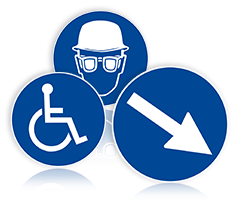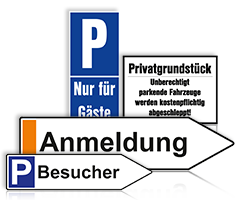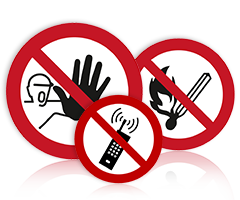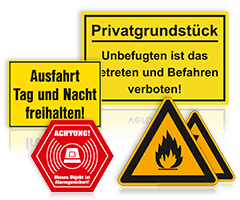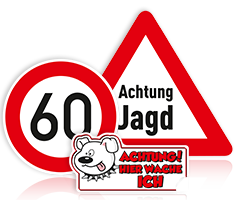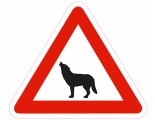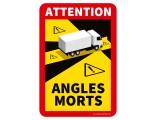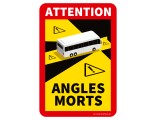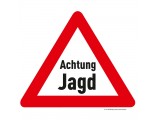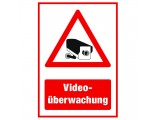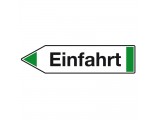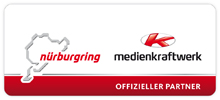Warning and information signs
Warning and information signs: How to increase safety on your premises
Warning and information signs are important instruments for drawing attention to possible dangers and imperatives and thus increasing safety in buildings and on premises. They provide important information quickly and easily and are highly visible thanks to clear printing and bright colors. Depending on the application, all signs can be produced as stickers, in plastic, aluminum composite or acrylic. In this article you will learn how to effectively use warning and information signs to increase safety on your premises.
Areas of application of warning and information signs
Warning and information signs can be used in a variety of areas. Here are some examples:
Construction sites
On construction sites, warning signs can indicate hazards caused by ongoing construction. For example, they can indicate slippery surfaces, protruding materials, or locations with an increased risk of accidents.
Parking spaces
In parking lots, signs can indicate traffic rules and speed limits. In private parking lots, signs may also indicate the towing of unauthorized parked vehicles.
Building
In buildings, signs can indicate escape routes, emergency exits and fire alarms. Sources of danger such as electrical appliances or chemicals can also be pointed out.
Design of warning and information signs
For warning and information signs to be effective, clear design is important. Here are some tips for design:
Text and symbol
Clear text and a corresponding symbol help to quickly and unambiguously point out possible dangers. For example, a sign for an emergency exit should have a clear arrow and the words "emergency exit".
Colors
Bright colors that are highly visible help draw attention to the sign. For example, the colors yellow and black should be used on a warning sign for slippery surfaces.
Size and placement
The size of the sign and its placement are also important factors. The sign should be placed so that it is clearly visible and not covered by other objects.
Production of warning and information signs
Warning and information signs can be produced in a variety of ways. Here are some possibilities:
Sticker printing
Warning and information signs can be printed as stickers to be attached to doors, windows or other smooth surfaces, for example. Here, care should be taken to ensure that the sticker is durable and weather-resistant.
Plastic production
Signs made of plastic are robust and durable. They are particularly suitable for outdoor use, as they are weather resistant. Plastic signs can also be used on construction sites or in industrial plants.
Acrylic production
Signs made of acrylic glass are particularly noble and attractive. They are well suited for use in buildings or in representative rooms. They can also be used as information signs at events or trade fairs.
Production on aluminum composite
Warning and information signs can also be produced from aluminum composite or aluminum dibond. These materials are particularly stable and durable and are well suited for outdoor use.
Conclusion
Warning and information signs are an important part of safety measures on premises and in buildings. They provide quick and uncomplicated information about possible dangers or imperatives and are highly visible thanks to clear printing and bright colors. Depending on the application, they can be produced as stickers, made of plastic, aluminum composite or acrylic. Important in the design is that the text and symbol are clear and understandable, the colors are bright and easily visible and the size and placement are optimally chosen.
-
from €3.78 netfrom €4.50 incl. VAT -
from €3.78 netfrom €4.50 incl. VAT -
from €3.78 netfrom €4.50 incl. VAT -
from €3.78 netfrom €4.50 incl. VAT -
from €3.78 netfrom €4.50 incl. VAT -
from €3.78 netfrom €4.50 incl. VAT -
from €2.85 netfrom €3.39 incl. VAT -
from €6.68 netfrom €7.95 incl. VAT
-
Blind Spot - Angles Morts "Truck" on MagicAttach Film (Self Adhesive) - Set
16,72 € net 19,90 €plus shipping costs -
Blind Spot - Angles Morts "Bus" on MagicAttach Film (Self Adhesive) - Set
16,72 € net 19,90 €plus shipping costs -
Blind Spot - Angles Morts "Motorhome" on MagicAttach Film (Self Adhesive) - Set
16,72 € net 19,90 €plus shipping costs

 ISOframe wave
ISOframe wave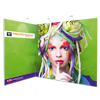 ISOframe Fabric
ISOframe Fabric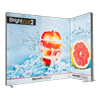 Illuminated walls
Illuminated walls OCTAwall
OCTAwall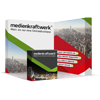 UltraTex - textile folding display
UltraTex - textile folding display Expand LinkWall
Expand LinkWall Exhibition walls
Exhibition walls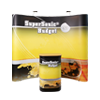 Folding displays
Folding displays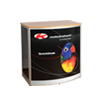 Promotion counters
Promotion counters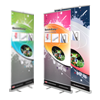 RollUp Displays
RollUp Displays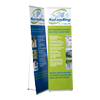 Banner displays
Banner displays Outdoor displays
Outdoor displays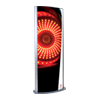 Illuminated displays
Illuminated displays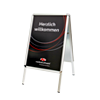 Customer stopper
Customer stopper Brochure stand
Brochure stand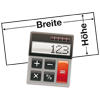 Calculate advertising signs online
Calculate advertising signs online Forex pressure
Forex pressure Print on alu dibond
Print on alu dibond Printing on acrylic glass
Printing on acrylic glass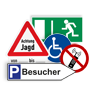 Warning and information signs
Warning and information signs Sign mounting
Sign mounting Your photo on canvas
Your photo on canvas Your photo as poster
Your photo as poster Your photo on acrylic glass
Your photo on acrylic glass Your photo as gallery print
Your photo as gallery print Your photo on alu dibond
Your photo on alu dibond Your photo on forex
Your photo on forex Photo textiles
Photo textiles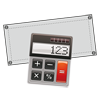 Calculate banner / advertising tarpaulin online
Calculate banner / advertising tarpaulin online Sticker / Foil Calculator
Sticker / Foil Calculator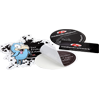 Foil cut stickers
Foil cut stickers Window sticker
Window sticker Floor advertising
Floor advertising Perforated foil
Perforated foil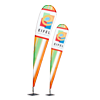 DropFlag
DropFlag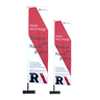 PoleFlag
PoleFlag SharkFlag
SharkFlag WingFlag
WingFlag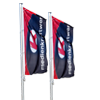 Hoist flags
Hoist flags
